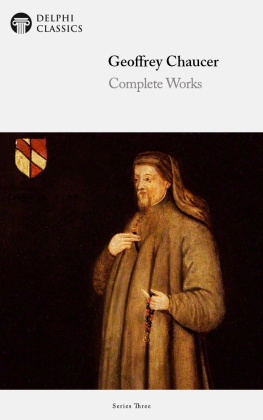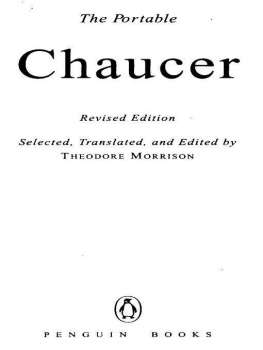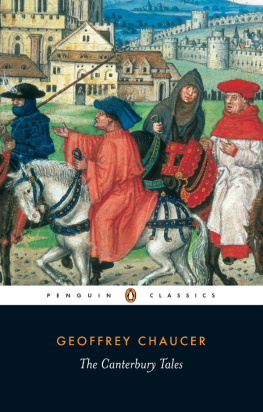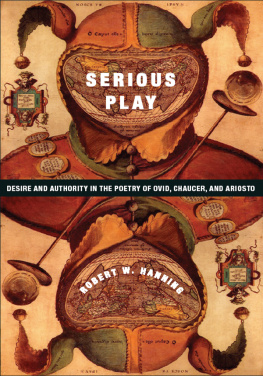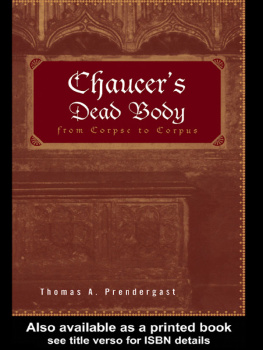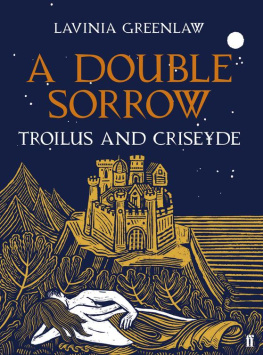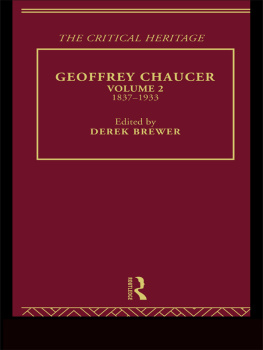
The Complete Works of
GEOFFREY CHAUCER
(1343-1400)

Contents

Delphi Classics 2012
Version 1


Browse our Main Series

Browse our Ancient Classics

Browse our Poets

Browse our Art eBooks

Browse our Classical Music series

The Complete Works of
GEOFFREY CHAUCER

By Delphi Classics, 2012
COPYRIGHT
Complete Works of Geoffrey Chaucer
First published in the United Kingdom in 2012 by Delphi Classics.
Delphi Classics, 2012.
All rights reserved. No part of this publication may be reproduced, stored in a retrieval system, or transmitted, in any form or by any means, without the prior permission in writing of the publisher, nor be otherwise circulated in any form other than that in which it is published.
Delphi Classics
is an imprint of
Delphi Publishing Ltd
Hastings, East Sussex
United Kingdom
Contact: sales@delphiclassics.com
www.delphiclassics.com
Parts Edition Now Available!

Love reading Geoffrey Chaucer ?
Did you know you can now purchase the Delphi Classics Parts Edition of this author and enjoy all the novels, plays, non-fiction books and other works as individual eBooks? Now, you can select and read individual novels etc. and know precisely where you are in an eBook. You will also be able to manage space better on your eReading devices.

The Parts Edition is only available direct from the Delphi Classics website.
For more information about this exciting new format and to try free Parts Edition downloads , please visit this link .
NOTE

When reading Chaucers poetry on your eReading device, it is recommended to use a small font size and landscape mode to allow the formatting of lines to show correctly.
The Poetry

Depictions of London in Chaucers time the authors precise birthplace is unknown

Medieval Cheapside, London, where Chaucer is believed to have grown up

Cheapside today

Map of London in Chaucers time
The Romaunt of the Rose

Believed by some critics to be Chaucers earliest major work, this is a partial translation of the French allegory The Roman de la Rose . In The Legend of Good Women Chaucer claims to have translated a part of the poem, but the extant text is of dubious authenticity. Of the three existing fragments, the first uses Chaucers language and style and is often accepted as genuinely being his. The second fragment appears to be written in a northern English dialect and is often rejected by scholars, although the third part is closer to Chaucers style. Nevertheless, the last fragment is also usually rejected as spurious.
Composed by two authors between 1230 and 1275 , The Roman de la Rose is a medieval French poem, serving as a notable instance of courtly literature of the time. The poems stated purpose is to both entertain and to teach others about the Art of Love, demonstrating the influence of the Roman poet Ovid. At various times in the poem, the Rose of the title is seen as the name of the lady, and as a symbol of female sexuality in general. Likewise, the other characters names serve both as regular names and as abstractions, illustrating the various factors that are involved in a love affair.
The translation of Chaucers first fragment concerns an allegorical dream, in which the narrator receives advice from the god of love on gaining his ladys favour, with her love being symbolised as a rose that he is unable to attain. The second fragment is a satire on the mores of the time, with respect to courting, religious order and hypocrisy. The third fragment takes up the poem 5,000 lines after the second fragment ends and at its beginning, the god of love is planning to attack the fortress of Jealousy with his barons. The rest of the fragment is a confession given by Fals-Semblant, false-seeming, which is a treatise on the ways in which men are false to one another, especially the clergy to their parishioners.

An original manuscript copy, c.1400
CONTENTS

A portrait of Guillaume de Lorris, the first of two poets to compose The Roman de la Rose, from a manuscript of in the Bodleian Library
Fragment A
MANY men seyn that in sweveninges
Ther nis but fables and lesinges;
But men may somme swevenes seen,
Which hardely ne false been,
But afterward ben apparaunte.
Next page
